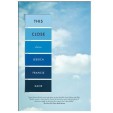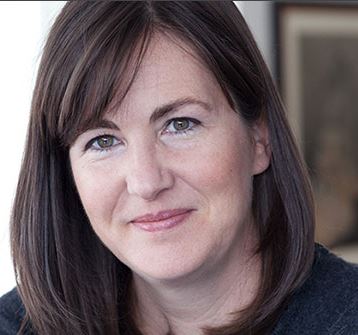However closely marriage, parenthood, or circumstance may connect people, divides are perhaps inevitable. The nature and consequences of these divides are central to This Close, Jessica Francis Kane’s layered, complex, and sometimes heartrending new story collection.
In “American Lawn” and “The Essentials of Acceleration,” Kane explores divisions between neighbors in a university town. A major source of resentment in both stories is Janeen, a young mother who, with her husband, Ryan, is fixing up an old bungalow and its long neglected grounds. Pat, a neighbor at the center of “American Lawn,” doesn’t welcome the changes: “She wondered what Janeen and Ryan were hiding.” When Pat turns over part of her yard to a Croatian immigrant who had been looking for a plot of land to garden, Janeen befriends him. This sparks jealousy in Pat and a conflict between the women that ends up offending and alienating the gardener. Through this conflict and events that unfold in “The Essentials of Acceleration,” Kane re-creates the tangles unique to neighborhoods, where strangers are brought into random yet extended—and sometimes unfortunate—proximity.
In “The Essentials of Acceleration,” Holly Levering, an opinionated introvert, is distanced not only from her neighbors but also from her more outgoing father, a retired professor with whom she shares a home. While her father is in the habit of delivering flowers from his garden to neighbors, Holly is in the habit of keeping to herself. The only flowers she delivers are to the site of a car accident in which her mother died years before. At some point, the neighbor Janeen appears, showing concern for Holly’s elderly father in a way that Holly sees as both intrusive and offensive. Holly thinks, “I suspect [Janeen] shakes her head over dinner on the rare nights when her husband is at home and says, ‘I don’t understand Holly Levering. Why doesn’t she look after her father better?’”
One day, Holly sees Janeen put an arm around her father and notices “the way my father leaned into her, a small collapse, as if he were bone tired and he knew she would support him.” Here, Holly is as honest with herself as she is blunt with others. And even if she’ll never quite close the divide between herself and her father (and Janeen), much less get past the loss of her mother, Holly seems to come to a new understanding of her situation. Such subtle shifts in perception occur in several characters in This Close, and Kane portrays these transformations with quiet intensity.
Divisions sparked by loss are explored in even greater depth in four connected stories: “Lesson,” “First Sale,” “Double Take,” and “Night Class.” Each story touches on a different phase in the life of a single mother, Maryanne, whose son, Mike, we see first at the age of fifteen, then at five, then retrospectively, after his drowning in young adulthood. “First Sale” focuses on a yard sale Maryanne holds shortly after her husband, Mike’s father, has left. While, to Maryanne, the sale is one welcome step toward shedding her old life, to five-year-old Mike it seems to represent only loss. At the end of the day, he “looks around at the last of their sale, wanting everything back. The dresser, the picture frames, the puzzles, the clothes—all of it came from the time before, when the days were brighter and different and his father was home.”
In “Double Take,” the most layered of the four stories, we see Mike’s life—and death—not only from Maryanne’s point of view but also though the eyes of Mike’s college friend Ben. Ben remembers Mike as “eccentric and wacky, fun to be around,” and as the only full-scholarship student Ben had known at Yale. Connecting with Mike “distinguished him, Ben, in some way. It made him seem more remarkable in his choice of friends.”
We move on to Maryanne’s perspective when Ben and other friends of Mike take her out to dinner after Mike’s memorial service in New York City. Here and elsewhere, Kane insightfully portrays a tension typical of fraught social situations: that between our private thoughts and emotions, and the impressions we hope to make on others—in this case, virtual strangers. At the dinner, the exchanges between Maryanne and Mike’s friends are polite, gracious, and for the most part superficial. But Maryanne thinks to herself, “Why did she have to lead the conversation? Couldn’t these kids, with all their education, do better?”
Later, when Ben reluctantly (and guiltily) pays her a visit in Seattle, we get his side of the truth: “Maryanne remembered that dinner far better than Ben, even the name of the place, Patsy’s. He remembered that they hadn’t thought to take her to dinner at all, but they couldn’t say no to Alex [Mike’s boyfriend], who needed a break from her presence in the apartment.”
After Ben departs, Maryanne thinks, “She did not need this visit. A year ago, yes, but not now. … She had thought that he would be a friend, stay in touch. She hated to remember how she’d even thought he might become a second son.” Ben and Maryanne are divided not only by class and circumstance but also by the differences in what they want and need.
Another story examining grief, “Next in Line,” is perhaps the most poignant in This Close. It is told from the perspective of a young mother, Eva, who at the start of the story sets her tantrum-throwing fifteen-month-old daughter on the floor of a CVS so she can finish checking out at the cashier’s station. Afterward, another customer says this to the little girl: “Well, tell your mommy you won’t live to seventeen months if she keeps putting you on the floor like this.” When this prophecy, cruelly, becomes a reality Eva starts questioning her own behavior and the events at the CVS. She wonders if the judgmental stranger, who happened to have been dressed entirely in black, had been the angel of death. (Interestingly, “Next in Line” was the first story Kane wrote after her first child was born. As she told the Virginia Quarterly Review, “I had a hard time getting back to writing after she was born and figuring out how I was going to do both of these things—write and mother. And that was the story that emerged. And I thought that was bizarre. My mind was working out the worst that could happen.”)
Through “Next in Line” and the other stories dealing with grief, Kane offers a multidimensional exploration of the emotion. In one of Eva’s observations, we are invited to compare her grief with Maryanne’s, from “Double Take.” Reflecting on her daughter’s death, Eva thinks, “She was only a toddler. We only had a few clues about who she was. … [W]ouldn’t it be harder to lose someone you knew better? Is losing a toddler just losing a dream?” How, we might wonder, would Maryanne respond?
The last three stories in the collection (“The Stand-In,” “The Old Beginning,” and “Local Birds”) follow one family over time: John, a college professor; Hannah, his daughter; and Elizabeth, John’s wife and Hannah’s mother. Elizabeth is bedridden, presumably because of depression, and the distance this has opened between her and John and Hannah haunts all of the stories. John seems to have found a way to accept Elizabeth’s condition and her resulting withdrawal from the world. Yet the teenage Hannah introduced in “The Stand-In” finds the whole situation frustrating: “She had no greater understanding of why her mother was as disengaged with the world as her father was engaged, how they tolerated this difference, and what she was supposed to do about it.”
In “The Old Beginning,” set after Hannah has graduated from college and gone out on her own, John has become Elizabeth’s sole companion and caretaker, a situation that Hannah has described as “enabling.” But to John there seems to be “a fine line between hurting and helping, enabling and simply taking care of.”
In “Local Birds,” John is close to retirement, Hannah is now a mother herself, and things seem to be no different with Elizabeth. During a surprise birthday party that Hannah has organized for John at a local restaurant, Elizabeth leaves early, after it becomes clear to John that she is “no longer enjoying herself.” Even so, a significant change has occurred, and we see that it is in Hannah. Previously, John observes, Hannah would have been “desperate to placate and include a mother who needed to remove herself. Now she is calm and helpful, a remarkable transformation. John wonders how she managed it.”
This and other stories in Kane’s collection—even the heartbreaking “Next in Line”— acknowledge that neat, happy resolutions to life’s difficulties are the stuff of fairy tales; even so, it may be possible to move ahead with some degree of hope. Kane’s depictions of this reality are one source of her stories’ richness. Another source is the multiple perspectives on traumas and difficulties that Kane offers, especially in her grouped stories. Through these varied perspectives, we get authentically complicated views into her characters’ worlds.
Would My Pick be Your Pick?
If you're interested in ________, the answer may be "Yes":• Emotionally complex stories about parenthood and families
• Stories that follow particular people/situations over time
• Stories told authentically from a child’s point of view
• Tales of neighborhood conflicts
• Anything written by Alice Munro






